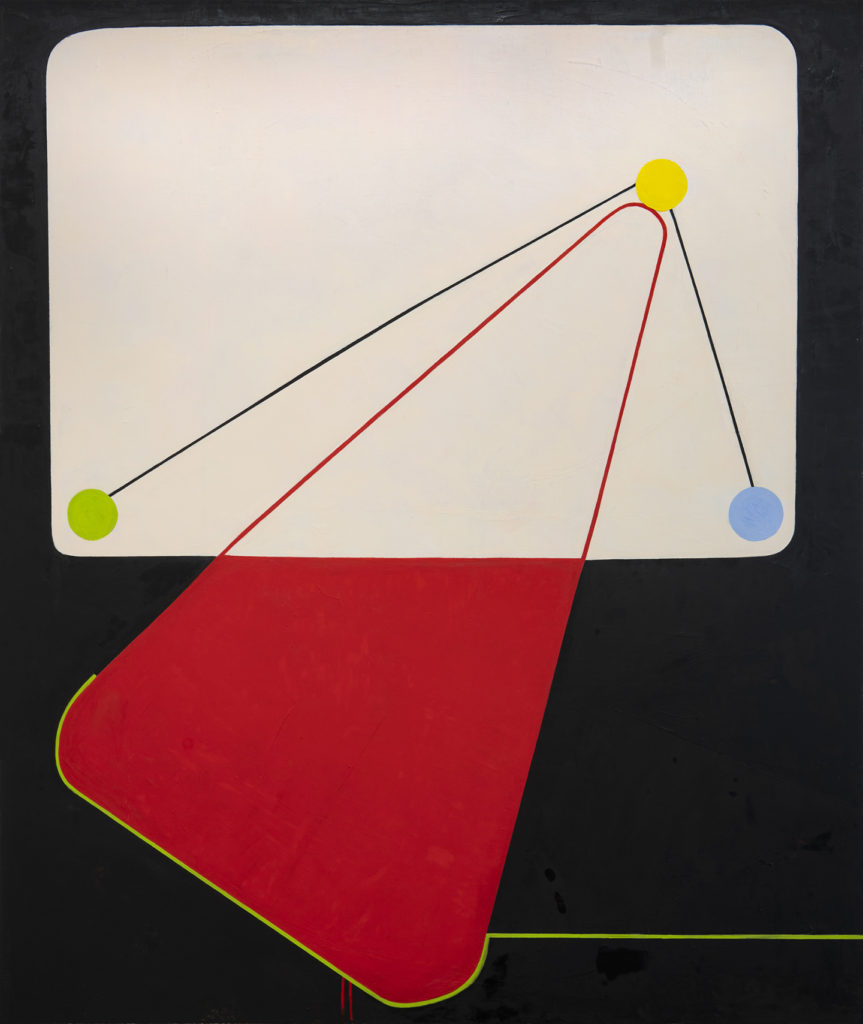
Mapping travel with art
Whether your destination is the Uffizi Galleries in Florence or the Temple of Karnak in Egypt, or whether you are traveling to see the Sagrada Familia in Barcelona or the National Museum of Anthropology in Mexico City or Vermeer’s “Girl with a Pearl Earring” at the Mauritshuis in the Netherlands—or if you like to escape the crowds to trek to the Budir Church in the lava fields on the southern coast of Iceland—seeing and experiencing art is a life-changing way to map your travels.
In the past I have blogged about books and films that have moved women to explore the world (Wanderlust: What Inspires Women to Travel; Travel Destination: In Search of the River Kwai, among others). Several responders have written to me that art and architecture also steers them to their destinations, and so I decided to interview an artist about how art affects her work when she travels.
“Art is a way of recognizing oneself.”
Louise Bourgeois
I was talking to my friend, artist Fran Shalom, and told her the story of someone who contacted me several years ago to say, “I am planning a trip to Italy, and I wanted to ask for your recommendations of places to see art there. I just wanted to tell you, though, that I don’t like religious art.”
Italian art minus the Virgin and Child
My first thought was to tell her not to go to Italy, where you cannot help but see religious art on every museum wall, in every church, in every home. Fran said that she would tell her that religious art, like all art, has an important historical context. It is more than just a religious image, although the beauty of an image and its execution is a vital part of a transcendent experience.
I never see this work without thinking it something new, and that I never leave it sated (Fra Giovanni da Fiesole [Fra Angelico]).
Giorgio Vasari
Travel to see the art of Fra Angelico: the Convent of San Marco, Florence, Italy
Fran describes herself as “a modernist abstract painter with a pop sensibility,” and, although her colorful and playful shapes seem to be polar opposites of the 15th century frescoes by Fra Angelico in the Convent of San Marco in Florence, she said that entering the monk’s cells in the monastery and seeing the paintings on the walls was an “awe-inspiring experience” that “has stayed with me all these years.”
Especially moving to her was seeing the art in its natural habitat; the fact that the frescoes are site specific and cannot be seen at a local museum is especially meaningful to her. Conceived and executed simply as aids to meditation and prayer, this simple and faith-filled images have taken their place among the most exhilarating masterpieces of Western art.
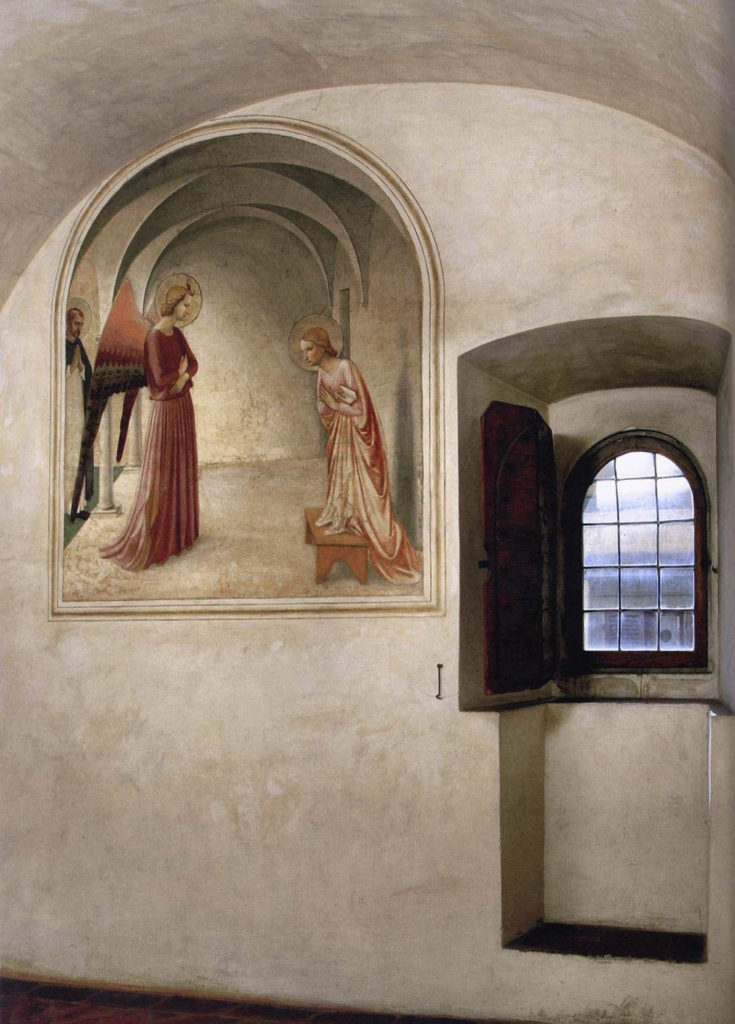
“Life beats down and crushes the soul and art reminds you that you have one.”
Stella Adler
Travel to see the art of Grunewald: the Isenheim Altarpiece, Colmar, France
Another powerful and inspiring artwork for Fran was the magnificent Isenheim Altarpiece in the chapel of the Hospital of Saint Anthony, Colmar, Alsace, France, which was created in 1512-1516 by Matthias Grünewald. A combination of Gothic and Hieronymus Boschian imagery, this Renaissance piece was commissioned by a monastic hospital that specialized in the treatment of skin diseases; it confronts the viewer with the brutal terror of death. It is a vision of hell on earth, in which the sufferings of Christ and the saints are visions in “psychedelic color.”
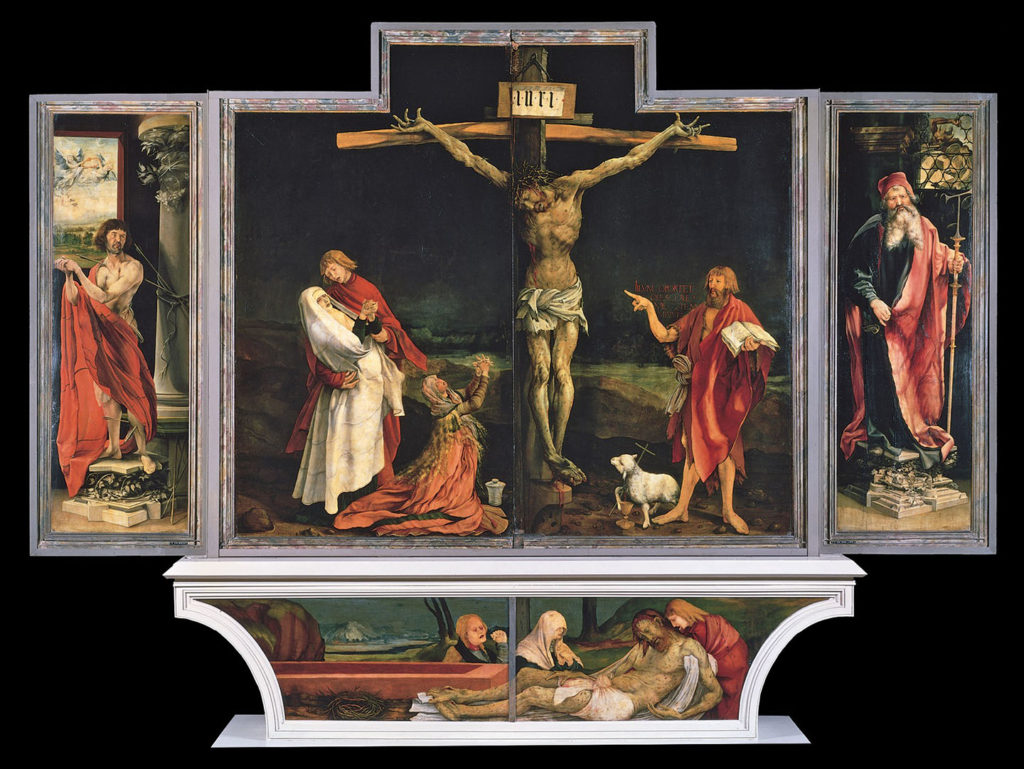
Travel to see the art of Bellini: “St. Mark Preaching in Alexandria,” Milan, Italy
Fran sees the art of others as a vital influence on her own work: “Looking at art inspires me to make work and connects me to the rich conversation about art, from cave paintings and early medieval art to what is currently being shown in galleries.”
She cites as an example of the links between seeing art, contemplating it, and creating it observing a Bellini painting during a trip to Milan:
“I am always inspired by the formal properties of a painting…shape, color, and light. In Milan there was a huge painting by [Giovanni] Bellini [“St. Mark Preaching in Alexandria,” 1504-1507; Pinacoteca di Brera, Milan]. It was a huge scene of officials and religious people and figures, all grouped around the painting. Each group had incredible hats that identified them. I was excited and inspired and thought that I might make a painting based on them.”
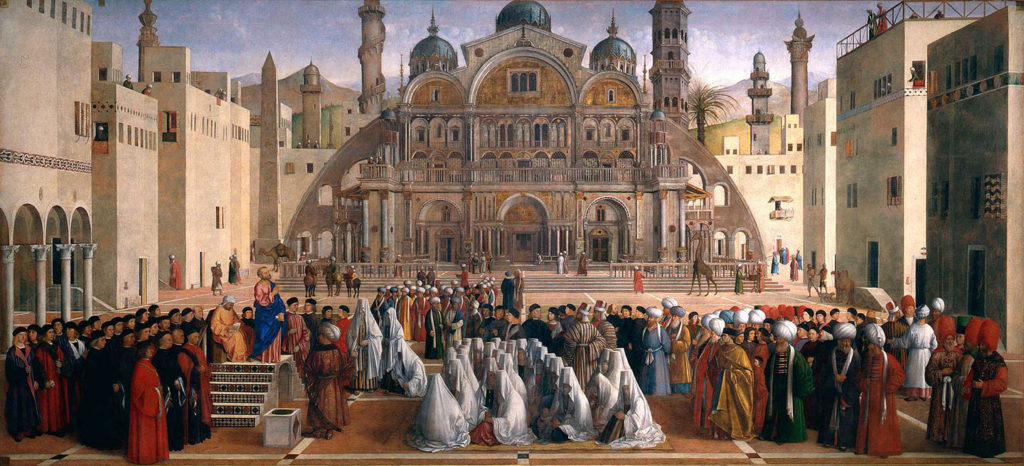
New York City: a favorite travel art hub
Although she is a world traveler, Fran’s favorite art sites are in New York City, just a brief trip from her home. Her favorite museum is the Metropolitan Museum of Art, where she saw an exhibition that influenced her own work in the 2005 Matisse: The Fabric of Dreams—His Art and His Textiles. It featured some 30 paintings and 35 works on paper displayed alongside—and showing the influence of—examples from Matisse’s personal collection of fabrics, costumes, and carpets from flea markets to Parisian couture gowns, African wall hangings, and Turkish robes.
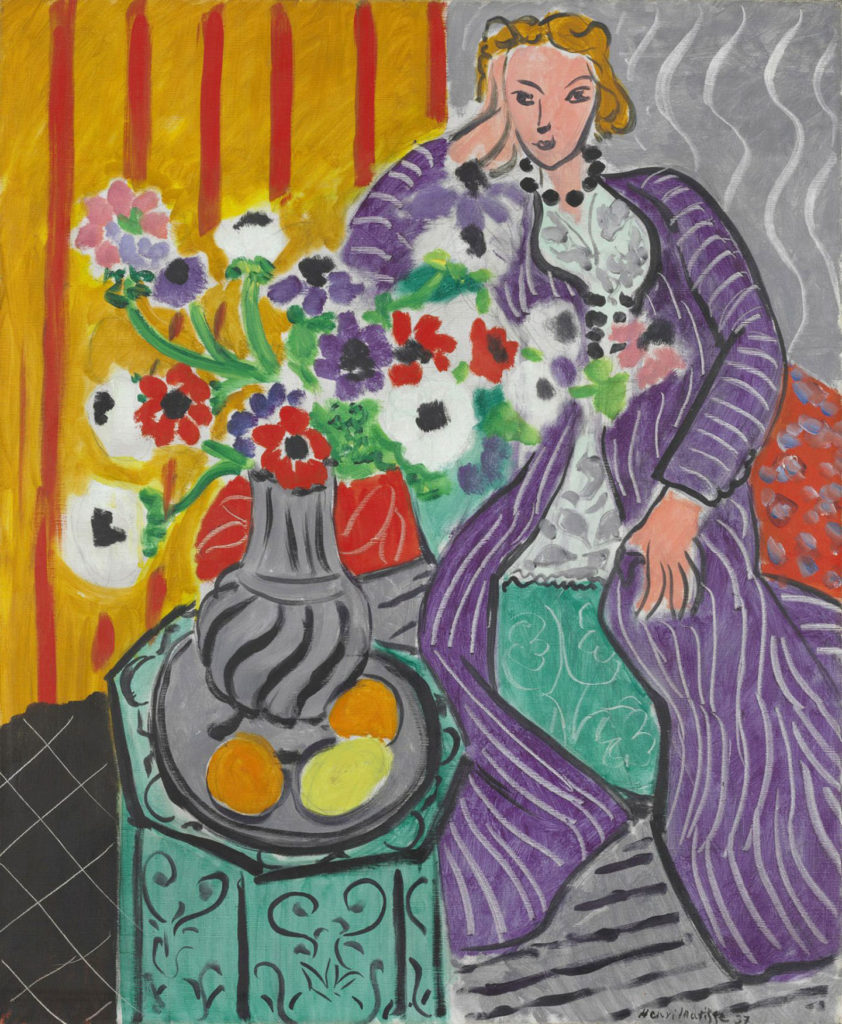
As in the exhibit, Fran sees inspiration for her work from a variety of sources, “from painting, architecture, and personal objects I have collected to my Zen Buddhist practice and just walking the streets of New York City.”
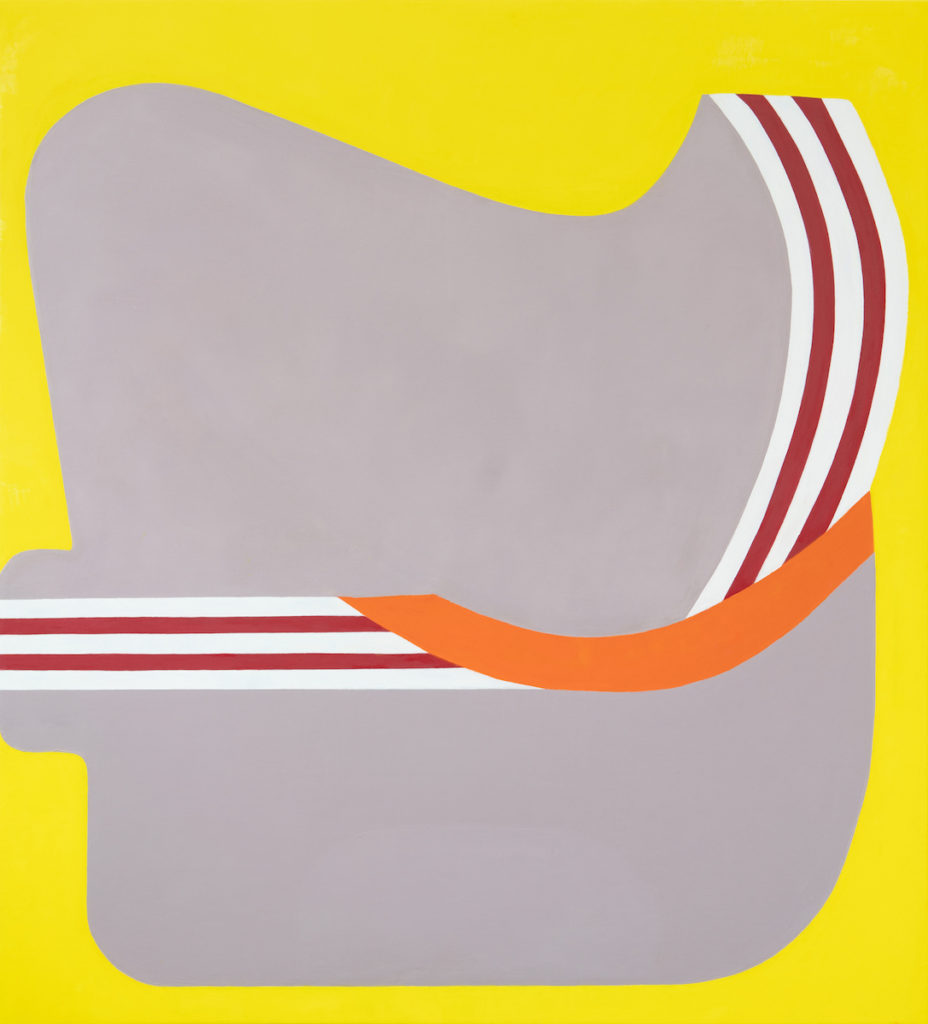
Georgia O’Keeffe
“To create one’s world in any of the arts takes courage.”
Travel to see the art of Walker, “A Subtlety, or the Marvelous Sugar Baby,” Williamsburg, Brooklyn
Another New York experience was one that was very different historically, politically, and aesthetically—Kara Walker’s “A Subtlety, or the Marvelous Sugar Baby” (2014) at the former Domino Sugar factory in Williamsburg, Brooklyn. Coated in sugar, the 35-ft-tall and 75-ft-long sculpture was dominated by a sphinx meant to symbolize a black woman in the antebellum South. At the end of the exhibition span, the sphinx was disassembled. Of it Fran said, it was “one of the most extraordinary art experiences in my life. Where it was situated, the smell of it, the scale of it, and the crowds moving around it all added to the overall experience.”
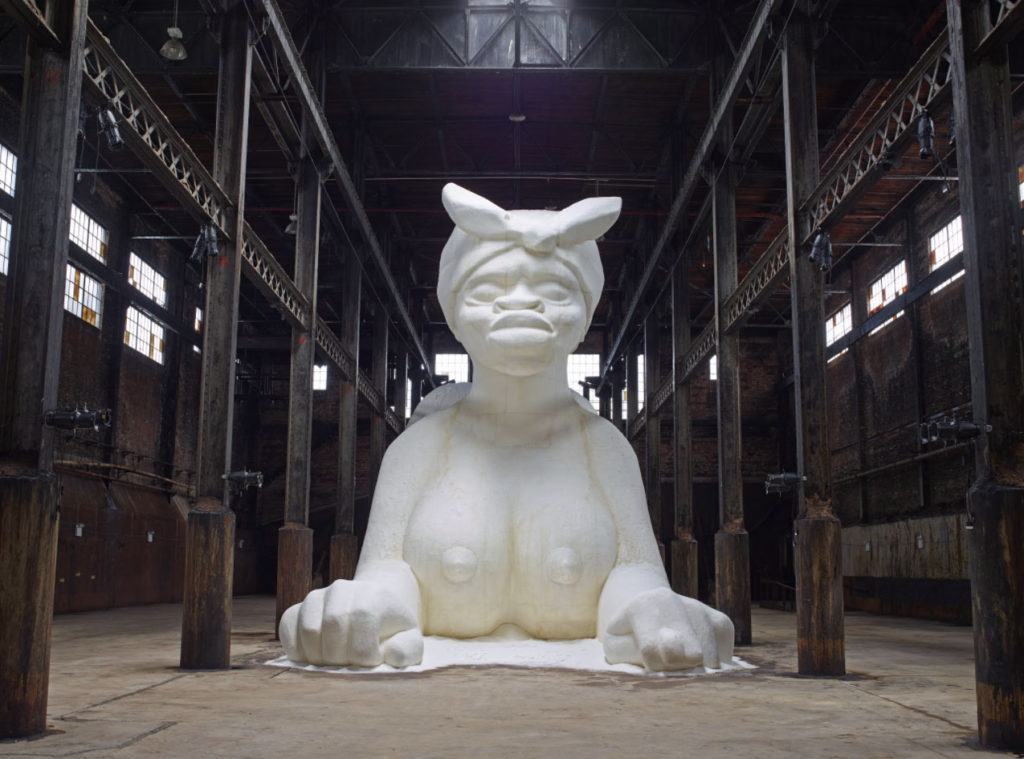
A layperson’s personal art travel inspirations
We non-artists are also moved by painting, sculpture, architecture….and the world. When I was in high school I used to peruse art books my mother used to buy, and one of my favorite books included works by French painter Paul Gaughin. When I went to college in 1966 one of the first places I visited was Boston’s Museum of Fine Arts. I saw it from down a long corridor—it was a blip of color—and I literally ran to see a life-changing painting for me: “Where Do We Come From? What Are We? Where Are We Going?” Those colors, sculpture-like figures, and mysterious gazes fueled my imagination.
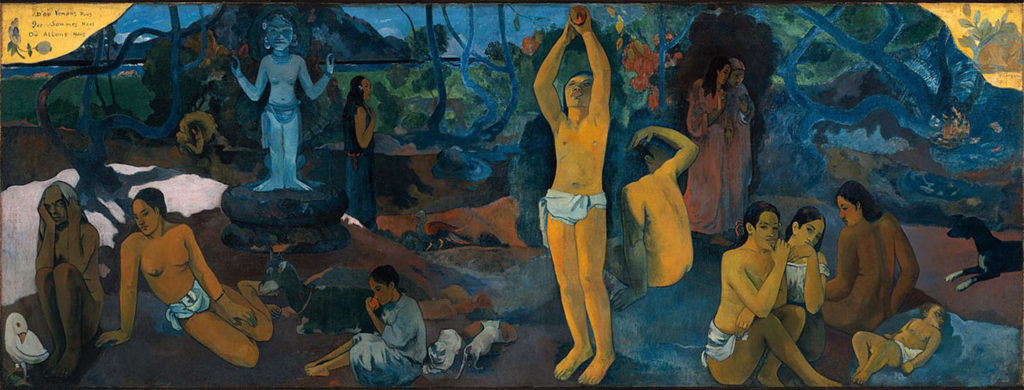
Since then I have been moved by a variety of art pieces and sites: from the perfect Romanesque basilica, San Miniato al Monte in Florence, to Bernini’s “Ecstasy of St. Theresa” at Santa Maria della Vittoria in Rome, to the 150th birthday celebration of Gustav Klimt in Vienna (2012), to temples on Bali and the Potala Palace in Lhasa, Tibet. The thrill of being in the presence of the work of creative geniuses from the past is always multiplied by the realization that I actually transported myself to a dream destination.
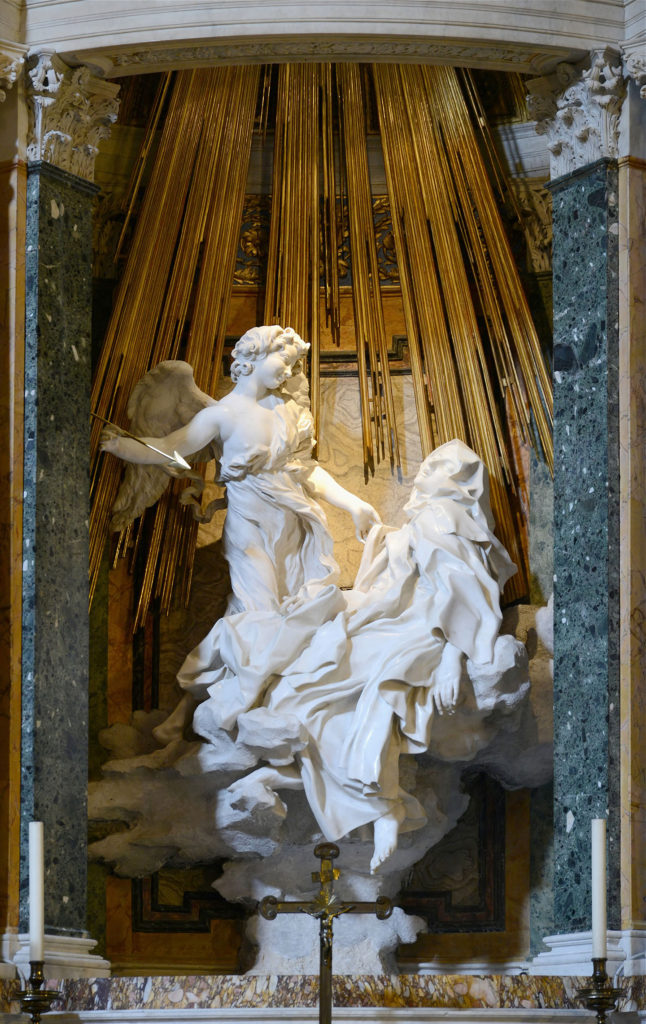
Rilke: Archaic Apollo
“Painting is silent poetry.”
Plutarch
But I am a word person, and the words that encapsulate the true art experience for me is German writer Rainer Maria Rilke’s poem “Archaic Torso of Apollo.” In the poem, the writer sees a bust of a Greek sculpture of Apollo. The stone image is so perfect, so filled with energy and power, that it forms an immediate and magical bond between the artist who created it and the viewer’s soul.
The short poems ends:
“…for here there is no place
that does not see you.
You must change your life.”
Rainer Maria Rilke
That thunderclap of change can result in making art or even in traveling to see art, or it can mean dedicating oneself to a completely different path in life. By seeing the perfection created by the artist, you have learned what feeds your soul, and you are forever changed by it.
